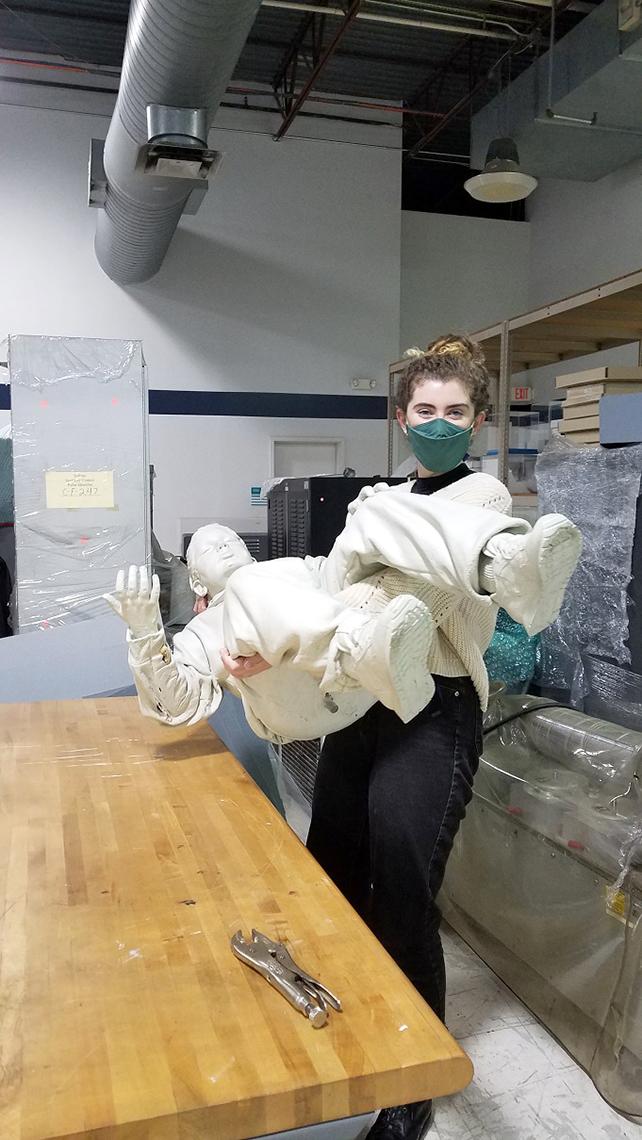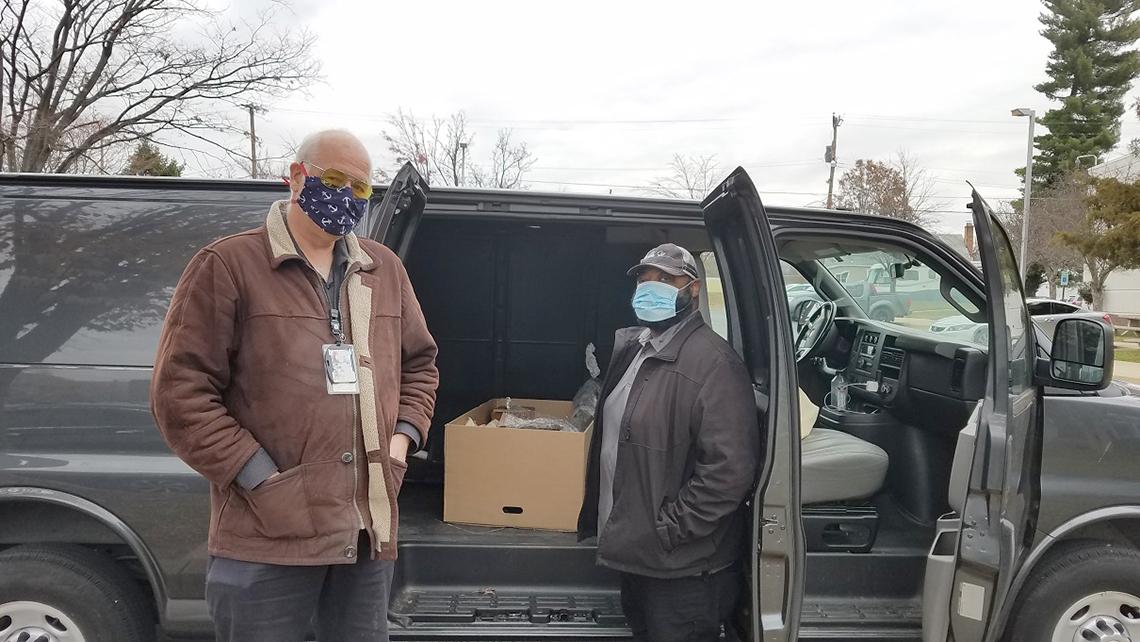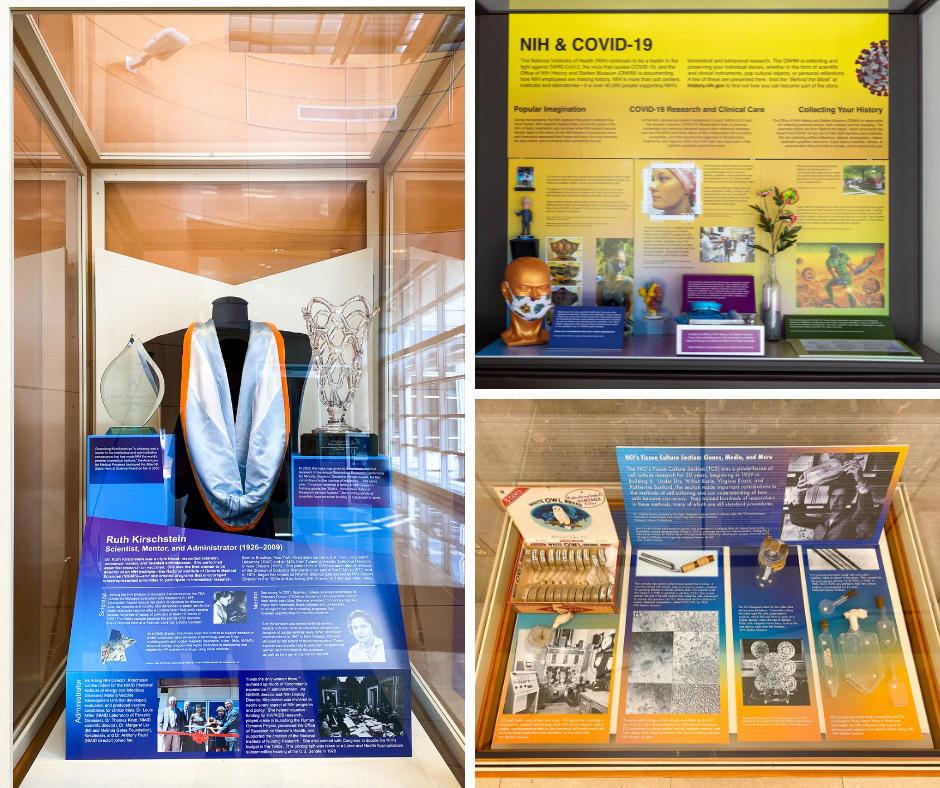NIH Museum Makes a Move
The Office of NIH History & Stetten Museum is moving its object collection to a new storage facility in Gaithersburg. Relocation requires packing up and keeping track of 3,700 items.
Among items being “deaccessioned” is an old statue that no longer fits in the museum’s collection scope. The not-quite life-size sculpture depicts the recipient of the first-ever gene therapy on Sept. 14, 1990, at the Clinical Center. She had adenosine deaminase (ADA) deficiency, which left her defenseless against infections. The gene therapy worked. The statue was a prop in a 1996 exhibit at the National Museum of American History and never formally adopted into the Stetten Museum’s collection.
“We’ll be finding new homes for the objects that aren’t coming with us, big and small,” reports associate director and curator Michele Lyons. “The curator from the National Museum of Medical History, Dr. Alan Hawk, took some artifacts that no longer fit our mission to give them a new home in Silver Spring.”
Museum staff also took time to reflect on exhibits that debuted last year. During 2021, the office installed displays featuring the late NIH icon Dr. Ruth Kirschstein, Covid-19 and NCI’s tissue culture section. Eight exhibits are in the works for 2022.
In addition, the team updated its website for a more user-friendly and visually appealing experience. Along with this update, they also designed and published a new online narrative about the Canyon Creek Schoolhouse Laboratory 100th anniversary in Hamilton, Mont.
You can connect with NIH’s past and keep up with all the recent goings-on at history.nih.gov.



